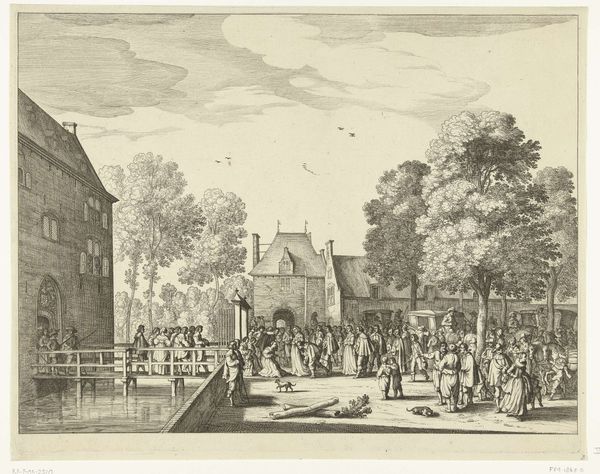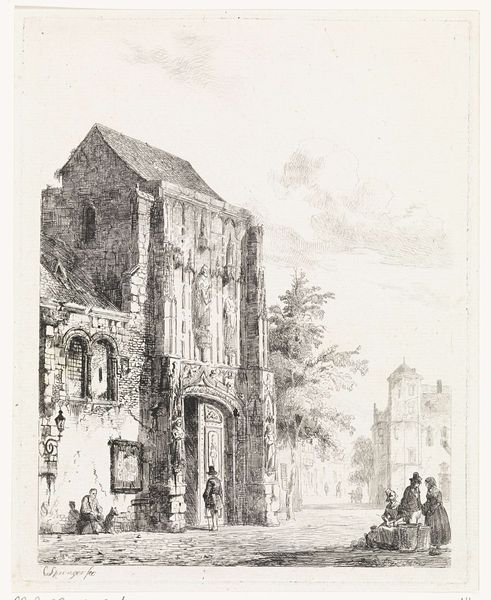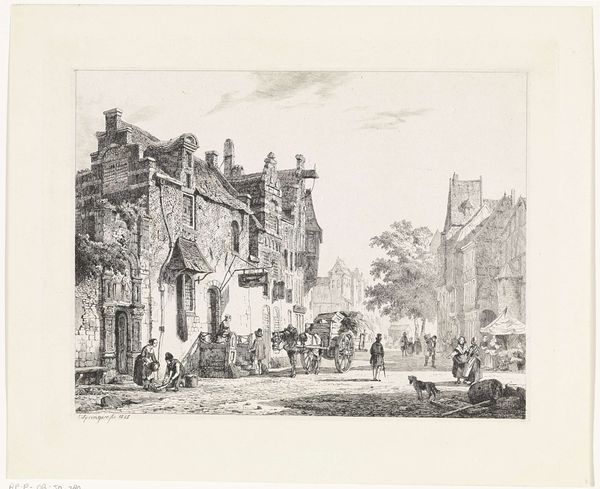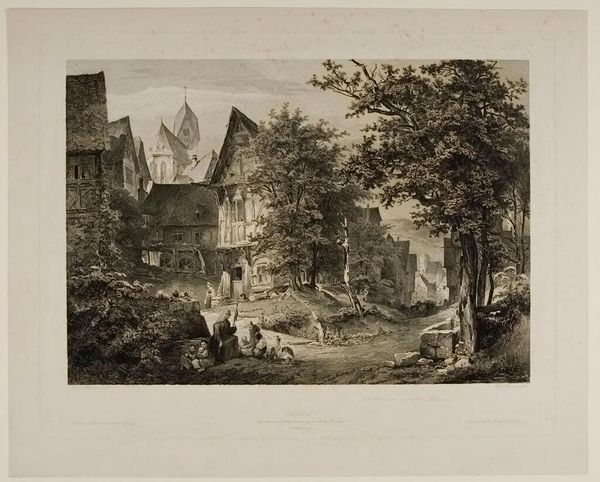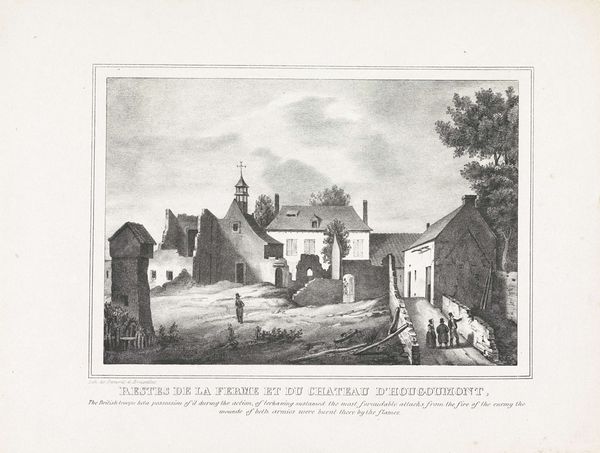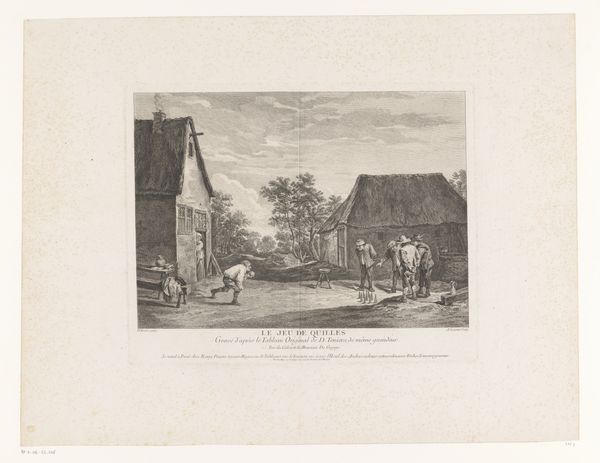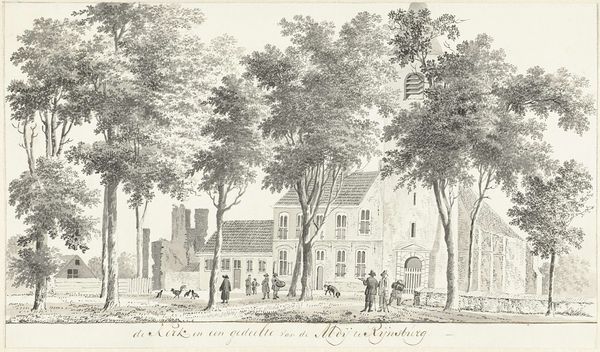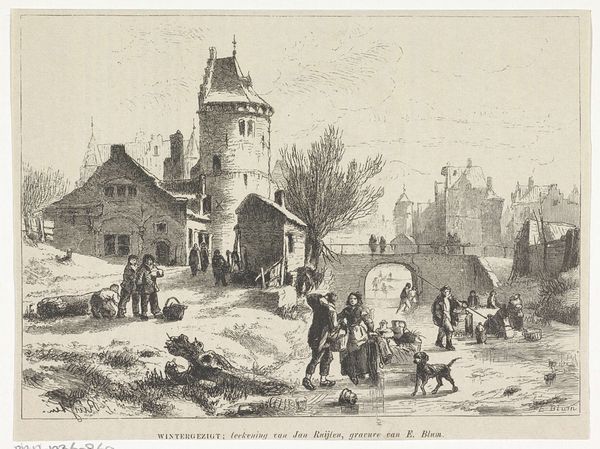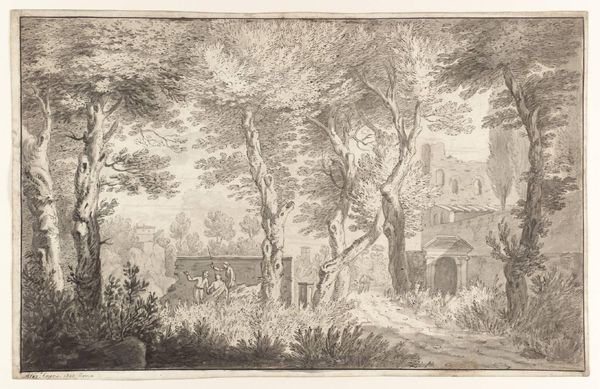
print, etching
# print
#
etching
#
old engraving style
#
romanticism
#
cityscape
#
history-painting
Dimensions: height 207 mm, width 253 mm
Copyright: Rijks Museum: Open Domain
Curator: This etching, titled "Ruïne van het huis van minister Van Maanen in Brussel, 1830," presents a somber scene rendered during the years 1830-1831. Editor: My first impression is the unsettling contrast; figures elegantly dressed amidst utter ruin. There’s a real sense of Romantic era drama, yet muted by the gray tonality. Curator: Indeed. This piece captures the aftermath of the Belgian Revolution. Van Maanen, as Minister of Justice, was a symbol of Dutch oppression, hence the targeting of his residence. The print medium itself allowed for wide dissemination of this politically charged image. Think of it as 19th century visual propaganda, shaping public perception. Editor: It's fascinating how the artist used the stark lines of the etching to depict both the delicacy of the clothing and the brutal reality of the building’s destruction. Look at the quality of the line. There's commentary here about the fragility of power, perhaps, and how quickly grandeur can decay. Curator: Exactly! And the inclusion of figures seemingly observing the devastation underscores the societal impact. The act of viewing itself becomes implicated in the politics of the revolution. It prompts us to consider how spaces become politicized during times of upheaval. Who owns the narrative, and how is it circulated? Editor: Considering the Romantic aesthetic prevalent at the time, it’s not surprising to see even political commentary filtered through a lens that emphasizes emotional impact. You see a certain artistry even in the destruction—something undeniably compelling about ruins. It’s a dark allure, yet effective in conveying a message. Curator: True, the print serves both as a historical record and as a crafted object laden with ideology. Exploring how such imagery functions within wider discourses of power is imperative for a full comprehension of the past. Editor: I find the interplay between material and history in this work particularly poignant. It provides a vivid, lasting image of change in Brussels and evokes curiosity about similar shifts in the material world during social unrest today.
Comments
No comments
Be the first to comment and join the conversation on the ultimate creative platform.
